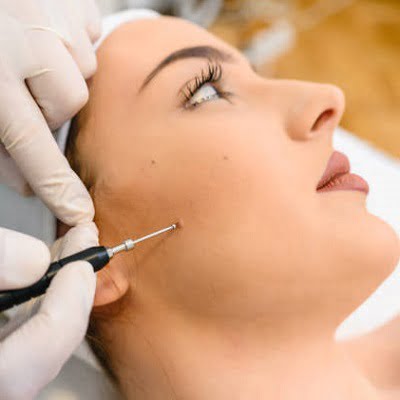
An average person has 10 to 40 moles on their skin, which might develop, deteriorate, or change with time. Moles are more frequently found on the arms and legs in women and on the back, trunk, head, and neck in men.
Melanocytes, pigment-producing cells, develop more quickly than usual and cluster together to form moles. Although these cells help shield our skin from the sun’s damaging UV rays, they can generally turn against us and indicate a serious medical condition called skin cancer.
In this blog post, we will discuss Mole removal: The top most frequent questions to be asked. These questions will be helpful for you to know why this treatment is important and effective. So, take a moment and read the following information!
An Overview:
Dermatologists often see individuals who want their moles removed for cosmetic or personal reasons. Here are some frequently asked questions that may be helpful if you’re deciding whether or not to have a mole removed.
Do All Moles Look Alike?
Although they appear the same to the untrained eye, normal and “atypical” moles can be distinguished by a few minute changes. Congenital moles, or those born with them, are generally distinguished from acquired moles, which form and change as we age. Although most of these moles are benign and safe, you should consult a doctor for more guidance if you have an unexpected mole.
What Leads Moles To Develop Cancer?
Genetic, hormonal, and environmental variables all play an important role in determining the features and quantity of moles. Recent research suggests that genetics may have a bigger role in your mole appearance and number than previously believed. Still, cancerous moles frequently appear due to DNA damage from too much sun exposure.
What Happens During A Consultation With A Practitioner?
Be ready to discuss your family and medical history, as well as the causes of your concerns regarding your moles, with your doctor during your initial session.
The expert will perform a quick physical examination on your moles to look for any irregularities or symptoms that might suggest a malignant condition.
Your doctor may suggest a skin biopsy, in which they will remove a sample with a scalpel and submit it to the lab for additional testing to safely rule out the skin cancer and make the most precise diagnosis. This straightforward process just takes 10 to 20 minutes.
What Is The Best Treatment For Mole Removal?
The size, shape, and depth of your mole will determine the best mole removal procedure for you. Today’s most popular procedures include excision, punch biopsy, and laser treatment removal, providing patients with various demands and objectives with surgical or non-surgical options.
Excision uses a scalpel to remove the mole and some of the surrounding skin. Depending on the mole’s size and whether a surgical excision or shaving is performed, a local anesthetic is administered to facilitate a painless procedure, and sutures may be needed.
Are Treatments For Mole Removal Safe?
The excision of moles is a very routine and safe treatment, but if carried out by a practitioner who lacks knowledge, there is still a chance of infection and nerve damage. Additionally, attempting mole removal on your own is NOT safe. Even though it may appear simple and convenient, even a minor mole removal might result in various problems.
All Summed Up!
You can always depend on our experts to ensure that your mole removal treatment is painless and leaves only minimum scarring, whether your moles are malignant or non-malignant. Therefore, it is important to ask about mole removal: the most frequently asked question.
We provide a variety of mole removal procedures at the SKN Cosmetic Clinic, including removal surgery and laser mole removal. These procedures are intended to eliminate the mole while minimizing pain, scarring, and recurrence



